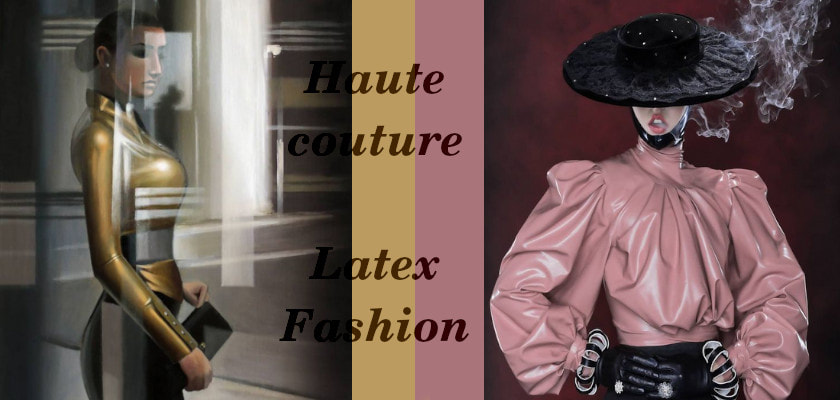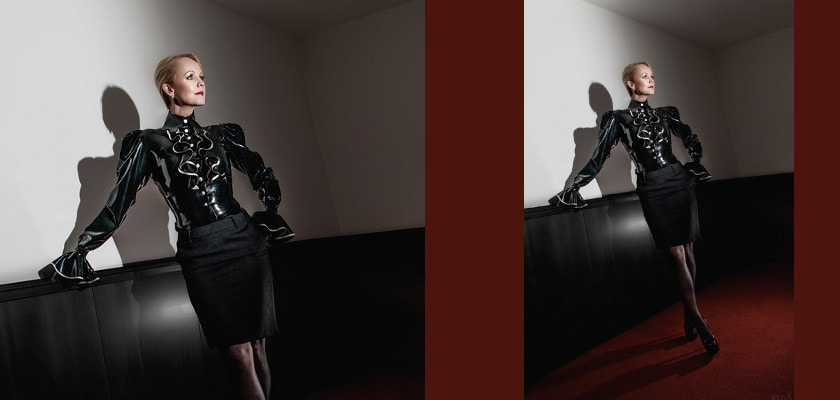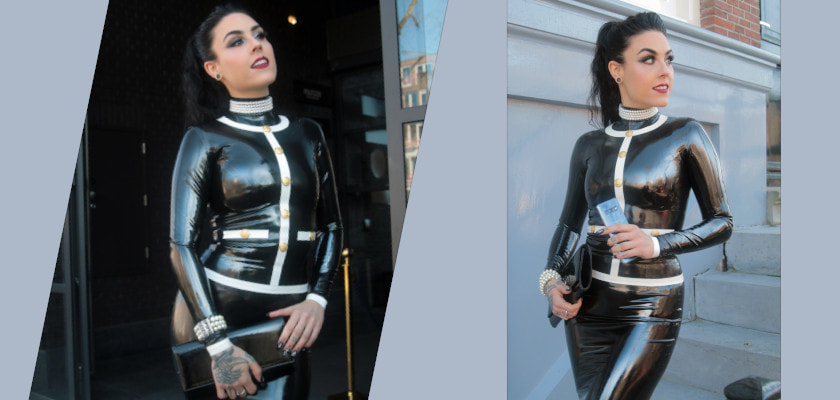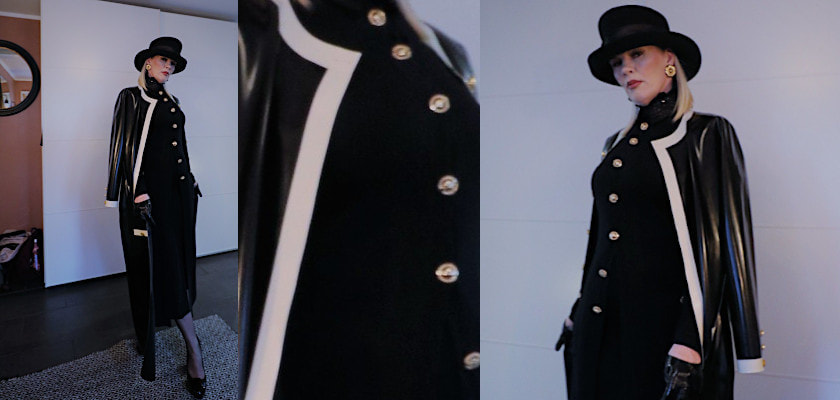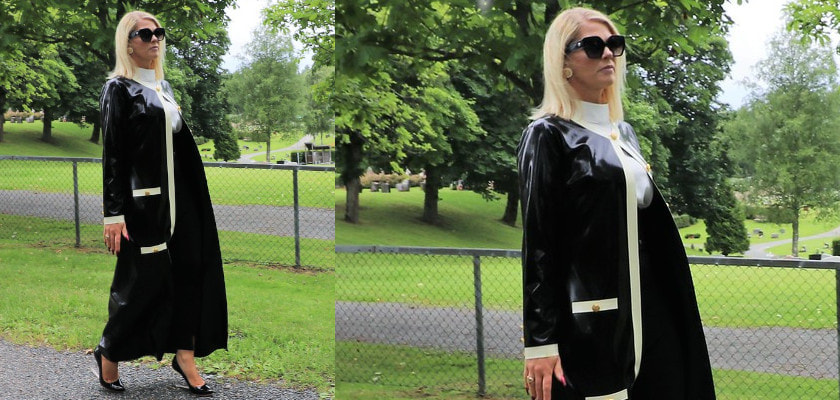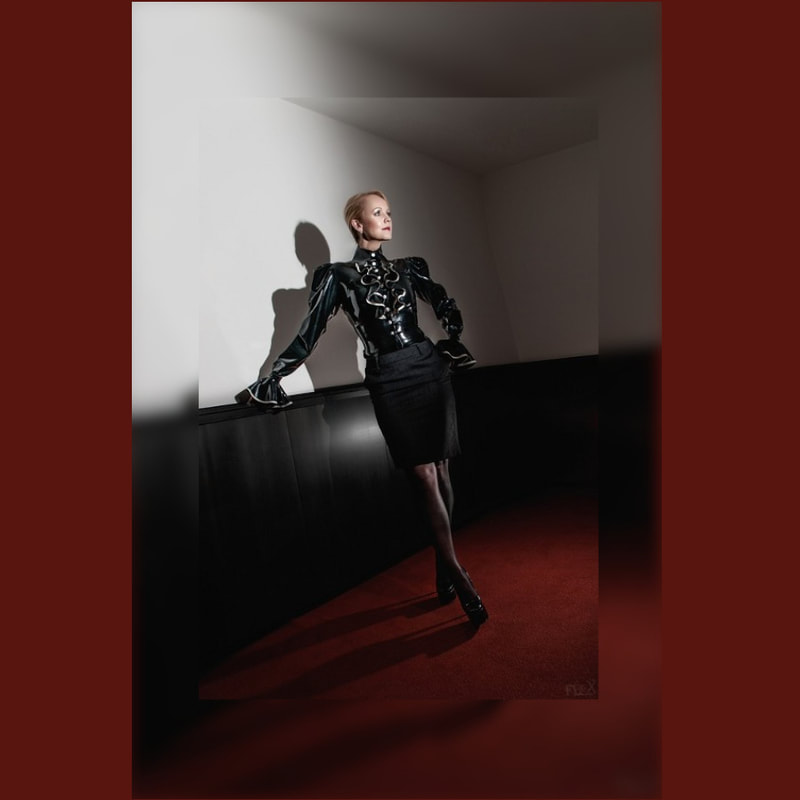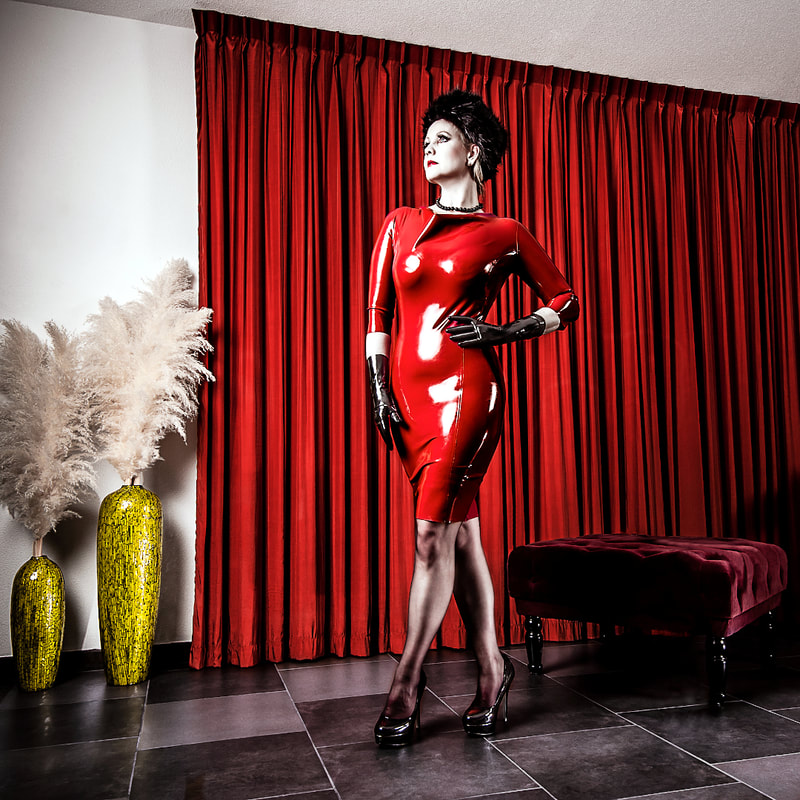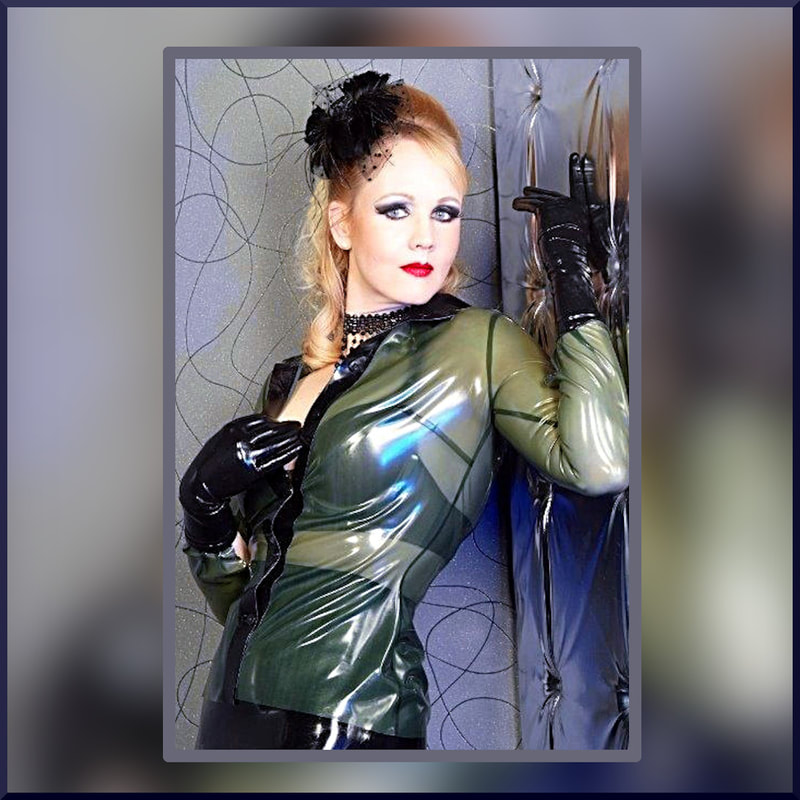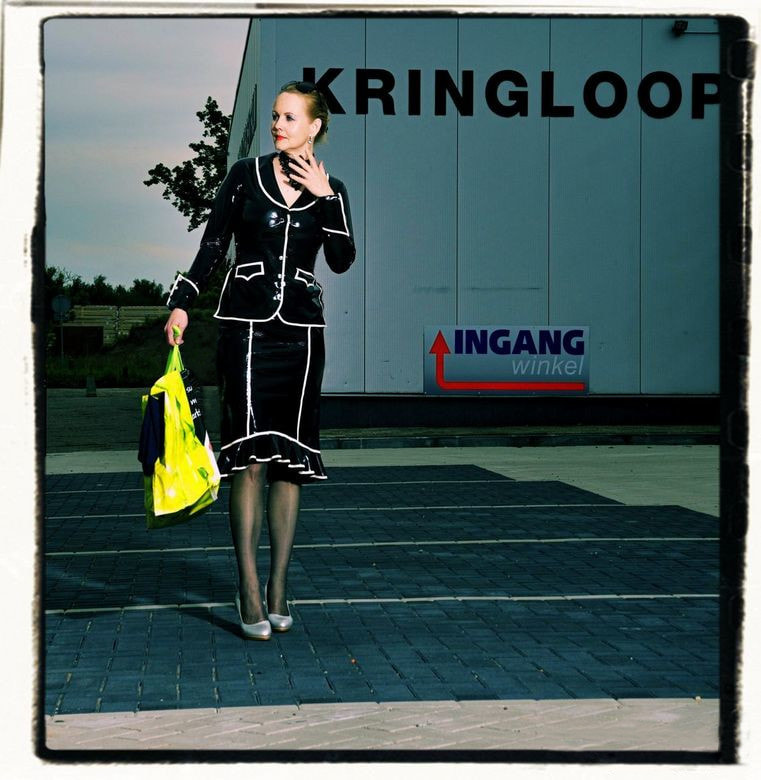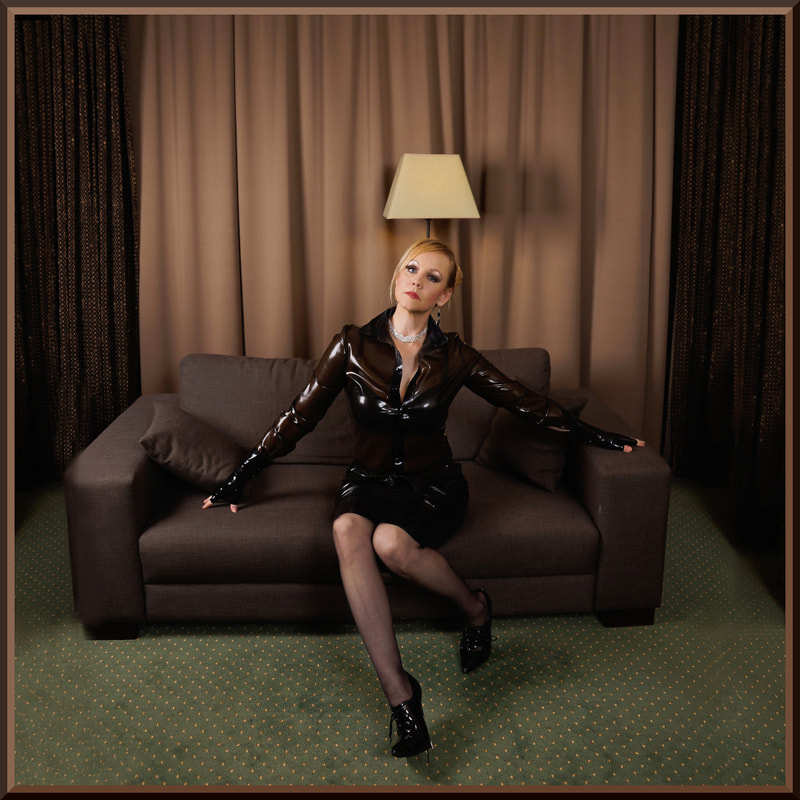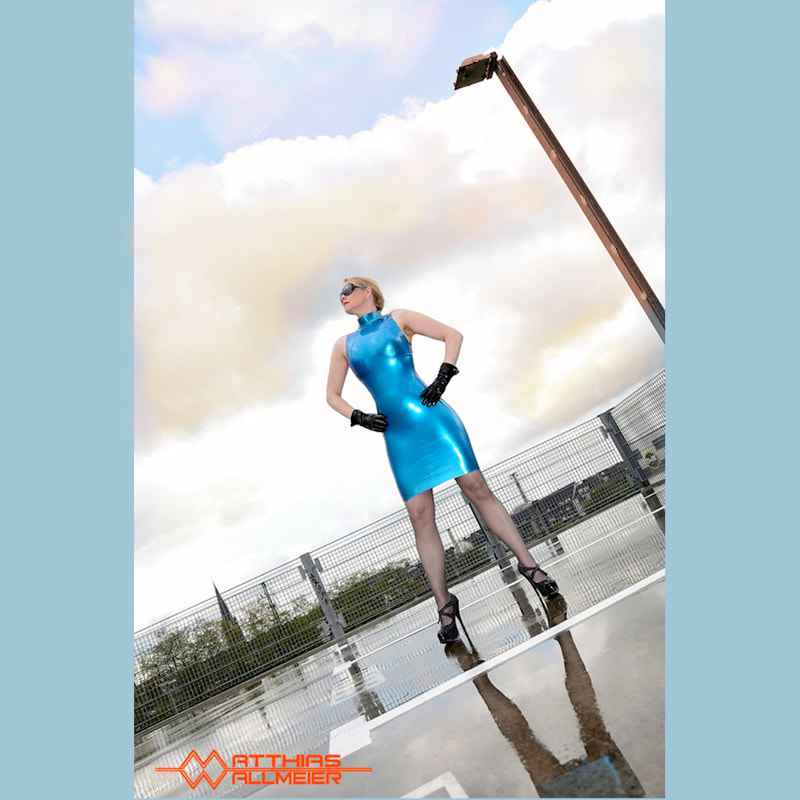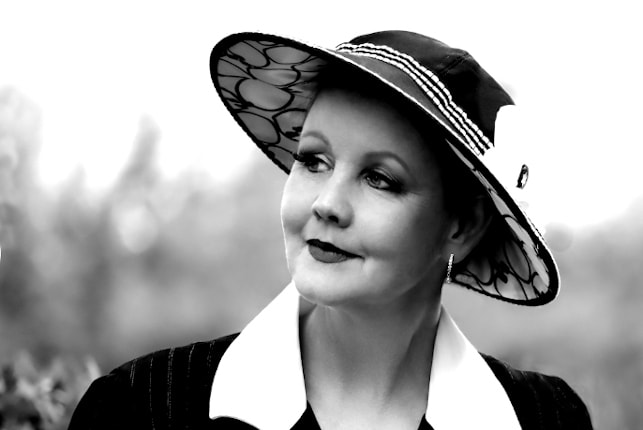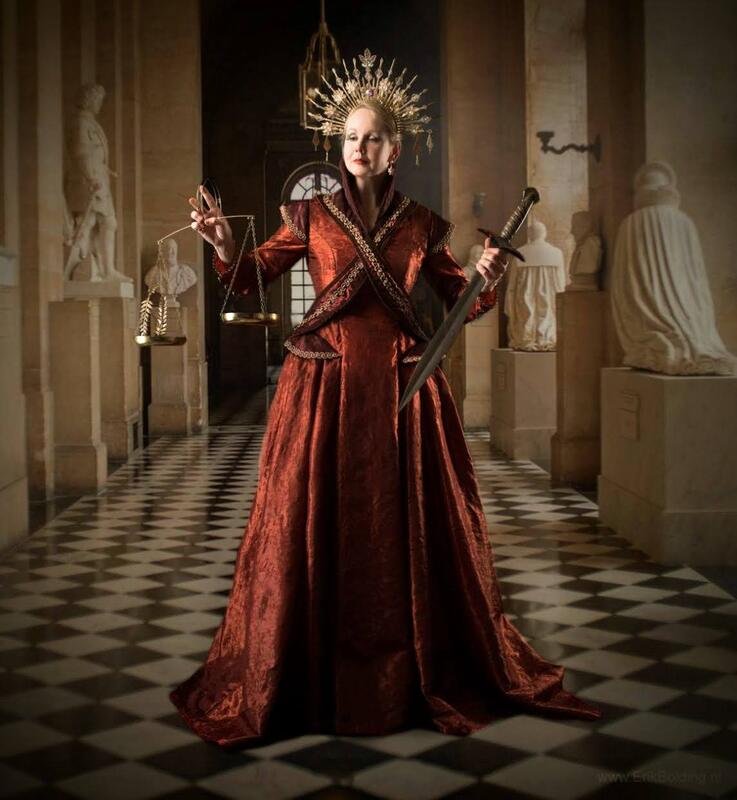|
Haute couture LATEX fashion is couture that consists of 100% latex. Beautiful creations are made with latex, but unfortunately most people have a different association with latex clothing. Namely: The sex industry and 'tacky' party clothing. Nothing is less true. Some latex-designers are creating Haute LATEX couture which is really couture and very chic! What is latex? Latex is a natural rubber that has not (yet) been processed, but is still a solid flexible substance that can be made from the sap of the rubber tree. It is the basis of many products such as tires, gum, condoms, gloves, clothing and paint. Latex clothing is therefore made from this rubber and has two very specific properties: it is extremely elastic and has a beautiful shine. It's very tight so it feels like you're constricted. A kind of super shaper, because every woman looks ten times slimmer in latex clothing. And because it also has such a beautiful shine, it is very attractive for a photo or to attract all the attention during a party. Latex clothing is very beautiful! The association with the sex industry is correct because a lot of latex, leather and leather look is used as the basis for sexy clothing. But latex is more than just super short skirts, dresses or catsuits. Latex clothing can also be found on the red carpet, at gala parties and as Haute couture. The reasons why latex is not yet seen on the street is because latex clothing is very expensive (because of the materials and the intensive work involved in making clothing), because of the super sexy image and because you have to handle it with care. Latex requires special treatment to stay beautiful, clean and shiny. With most latex clothing you will receive detailed instructions on how to care for the latex as well as possible. Photoshoots Latex is sublime for photo shoots. There are therefore a lot of models who always have one or more latex photos in their portfolio. Your figure comes out extra beautiful and it shines and shines like glamor the super luxury! It is a must that a photographer knows how to photograph this well. Latex photography is a specialty because of the light and shine of the latex clothing. Can you make latex clothing yourself? Many seamstresses will wonder this. You don't see any seams, you don't see any transitions in the latex clothing, how does this work? Is it pasted, melted, how do you get the shape in it? We don't get it... Time to ask a Latex expert! Sebastian Cauchos Sebastian Cauchos is a rubber fashion designer and photographer and has 44K followers on Instagram. #modestfashion activist Dm: 🇳🇱 🇬🇧 🇩🇪 🇪🇸 🇮🇹 🇻🇦 www.sebastiancauchos.bigcartel.com He is a celebrity and also a very nice and warm person. He designs, makes and photographs his latex clothing for models, celebrities and 'ordinary' women who like to be photographed in them. On the street, in the office, at home or in the park. The clothing may be seen and there is nothing 'pornographic' to discover. Most clothes cover the whole body and Sebastian also makes hoods and hats. Recently Sebastian Cauchos also made a 'Chanel-style' coat for a customer, see photos. We love the coat, it is very beautiful and super chic! Interview with Sebastian Cauchos: How did you come to work with latex? Had you made clothing before and did it lead from fabric to latex, or were you fascinated by the latex material and started making clothing yourself? "When I was still a student at art school, I came into contact with latex by accident. I was indeed fascinated by the material and developed an interest in design from there. I knew the kinky application of latex in the fetish scene at the time. But I personally don't like those dungeon looks and scantily clad fashion, because I'm a fan of very conservative looks, in terms of fashion, hair style and make-up.I was surprised that a conservative chic style was hardly combined with latex. So in the long run I decided to start making latex clothing myself. I am blessed with a lot of patience. Over time I was able to make exactly what I had in mind. All this without a commercial goal. Purely for creativity and the photo shoots that I usually organized myself." Do you also work from 'sewing patterns' or do you work from fantasy on a mannequin or live model? "I always make my own patterns. I am inspired by what I see in photos or what I see hanging in shops. I have a pretty good spatial awareness so I often know how the pattern goes when I see something in the photos. Some sewing patterns can also be supportive. Because latex is not a fabric, you will usually have to adjust a pattern." You can't sew latex, you stick and melt it... Is that right? Is this very labour-intensive and can you afford to make mistakes or is it a one-off process where you have to work extremely meticulously because no change is possible? "Yes, you stick it with special rubber glue. You can correct sticking errors by carefully pulling off the latex. This works best if you have just glued it. Correcting something after weeks becomes difficult, because then there is a good chance that it will no longer be comes loose or cracks Latex remains a very fragile material, so the way it is handled is crucial for its lifespan. Latex is sometimes also sewn. You don't see it often. But then it has to be pasted first, and then you can stick over it again with a special needle. It's a bit doubly on. The disadvantage is that the seam does not stretch in the direction of the seam. If it is used, it is therefore usually only with latex jackets or outfits that are not skintight. I don't use the sewing machine. I like the look of the adhesive seams without stitching the best. It is true that working with latex is very labour-intensive. Especially if you don't have much experience yet. That is also the reason for the usually "higher" price. Making clothes is actually always labour-intensive. We are used to paying too little for our daily clothes, all made in low-wage countries. Even the most expensive designer clothes are made there. Despite the use of the sewing machine, this is also just manual work. But with latex clothing, everything from A to Z is handmade. And if that work is done in a Western country, it has an apparently expensive price tag due to the high wage costs and fixed costs. But if you count it in labor hours, it's not that expensive at all." Is latex as a base material expensive? Do you ever mix it with other materials or is that impossible? I also notice that the color is always uni. Are color mixes or patterns/designs in latex not possible? "Yes, the latex sheets are quite pricey. And it will be even more expensive because of Brexit, because most of the manufacturers of the latex sheets are in the UK. There are now all kinds of manufacturers who manually make latex with patterns and textures. Those sheets are per meter 4 to 8 times more expensive because it is very labour-intensive work Combining with other materials is possible under certain conditions It becomes a bit complex to explain it here now because then it starts to look like a manual I manufacture my latex myself items only made of latex. I find it interesting to combine other pieces of fabric with my latex items during a shoot." Do you design everything yourself or is there a certain standard in the latex fashion world?
"Yes, I design everything myself. Besides, it depends on how you define designs. I'm not that original in my designs. I do that on purpose, because I go for the conservative and classic looks. I'm very inspired by classic themes and existing everyday clothing. I gather some elements together and at the most I give it a twist by exaggerating it and making it from latex. I am not going for the originality price. It's also not my goal to shine at some fashion week." Maintaining and photographing latex is very difficult. Do you do it all by yourself? "I shoot almost everything myself. Mainly because I like to do it myself. But the benefits are even more important: I then own the photos myself and then have a free hand in editing and publishing. Now I only occasionally respond to requests from other photographers. But only if I really see something in it. Making an appointment with three people is often a hassle... that already results in a squared planning delay. Let alone if it is a shoot with a whole team. That then has to be planned months in advance, something I really hate. Because every Dutch person (except me apparently) has a packed agenda for the next three months. But I don't like to have appointments more than two weeks into the future. When I plan a photo shoot myself, there are only two people: me and the model. It's much easier to plan. I'm more like: good photo weather the day after tomorrow, do you have time?" Can any woman of any dress size or body shape wear latex clothing? Is Latex Fashion only intended for the nightlife and show world or do you think it will become more 'mainstream' someday? "Latex clothing is suitable for anyone who feels comfortable with it. That does not include a certain body shape or appearance. Latex clothing can be ordered in standard sizes, but can also be made to measure. I don't think it will become more mainstream than it is now. That is not so much the image, but it has more to do with the fact that it is simply not a practical material for everyday use, and that it is relatively much more expensive than ready-to-use clothing. and is temperature sensitive (often too cold or too hot) and irremovable brown stains quickly form on lighter colored latex when it comes into contact with certain metals. All aspects that will never really make latex clothing mainstream. The cliché image of latex depends a lot on the type of outfit and the scene in which it is worn. Latex clothing has been seen in video clips and showbiz since the 1990s, so we are no longer surprised by that. So fully accepted in that context. But if you show up at the office in your latex catsuit tomorrow, everyone will think you're doing a S&M hobby over the weekend. But suppose you wear a chic latex blouse during a dinner or night out, then you will steal the show in a positive way faster. It also depends a lot on the country where it is worn. Here in the West, latex can quickly have those gothic/SM/fetish associations. But years ago I did a lot of outdoor photo shoots in Turkey, Armenia, Azerbaijan, Uzbekistan and Russia, and there it didn't have those associations at all because people were completely unfamiliar with the phenomenon at the time. And since my latex outfits are completely covered and far from kinky, it was just seen as some kind of everyday wet look fashion. So we were able to take pictures undisturbed everywhere in public." Could you recommend a seamstress to experiment with Latex? Are there training courses, workshops or courses or is the Latex fashion world too exclusive and unfeasible for a hobby seamstress to recommend? "Nowadays there are wok shops to follow and accessible to everyone. Especially in the Netherlands it is popular to make latex clothing as a hobby. It only requires patience and a little fingerspitzengefühl is a nice bonus. I myself learned how to paste it self-taught. those courses didn't exist at all." Comments are closed.
|
All about creating your own Chanel-Style jacket, Chanel-lovers information, Historic Costumes, Couture & Sewing book reviews and tutorials.
|
